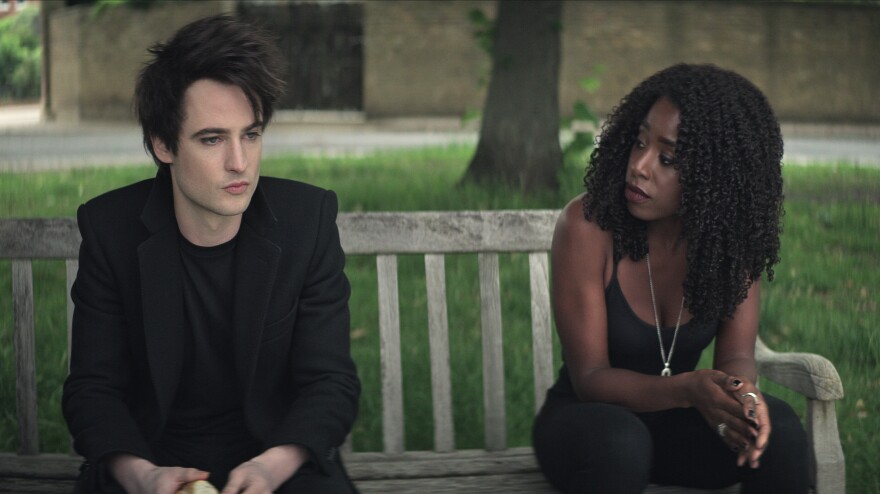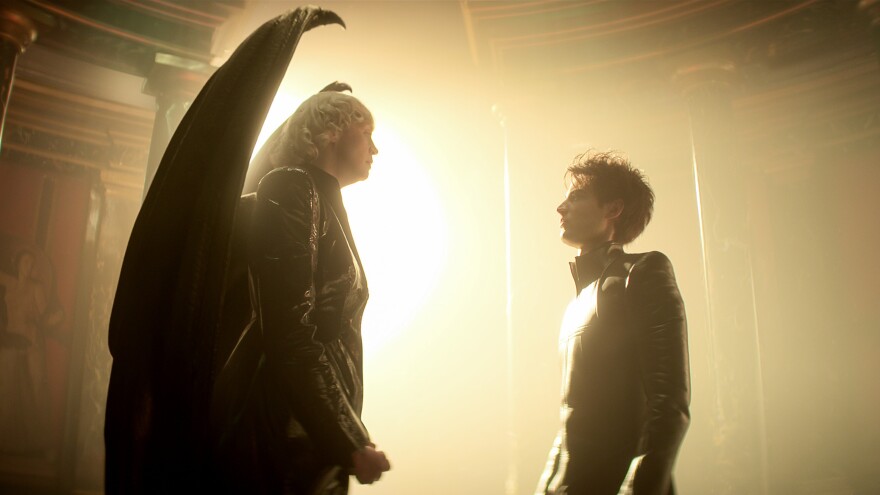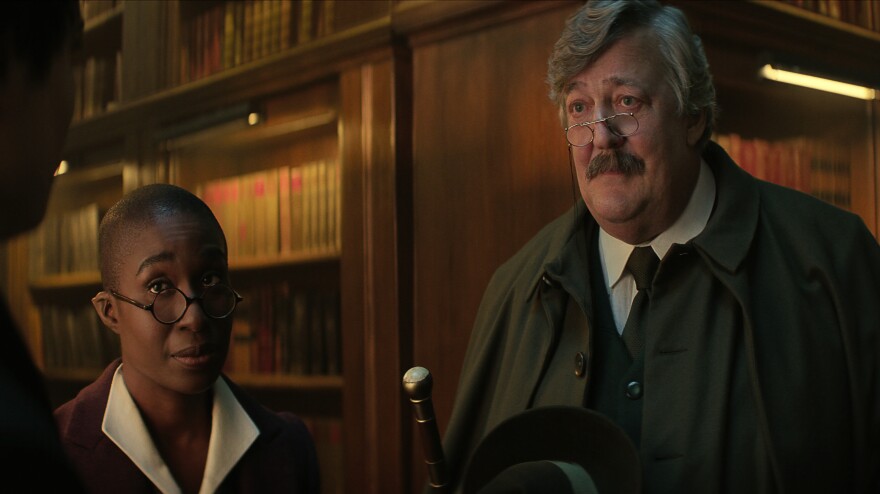First, to the many nervous fans of The Sandman among you:
Relax. They nailed it.
Yeah, it took forever, and a slew of assorted aborted attempts, but the Netflix adaptation of the landmark comic book series just ... works.
It succeeds as a faithful presentation of the look, feel and story of the Lord of Dreams as presented in the comics, which was written by Neil Gaiman, with art by Sam Kieth, Mike Dringenberg and many other pencilers and inkers over the years.
Far more importantly, however, it succeeds as a work of adaptation.
Where recent audiobook versions strictly adhered to every infinitesimal detail of the 1989-1995 comic run (and as a result ended up feeling both dated and overwritten), the Netflix series' grip on the source text is gratifyingly looser. It breathes.
Changes, big and small, have been made to characters and storylines that streamline, update and focus the narrative, now honed to fit the specific propulsive demands of serialized television.
Now, to everyone else coming to these stories and characters fresh: Okay, I have absolutely no idea how you're gonna take this. The show, like the comic, throws a lot at you out of the gate. But I think there's a better than average chance you might finally begin to understand why the rest of us have been pestering you to read the comic, all these years.

Like sands through the hourglass ....
The Sandman is the story of Morpheus, aka Dream. He's one of The Endless — a handful of abstract concepts (Dream, Death, Desire, Despair, etc.) that assume the anthropomorphic shapes of bickering siblings. While immensely powerful and immortal, they are bound by rules and duties as they oversee aspects of human existence. Morpheus, for his part, controls The Dreaming, a vast realm of adventures, delights and horrors that humans visit when we sleep.
The comic begins in 1916, when a self-styled British occultist traps Morpheus within a magic circle and robs him of his tools of office. (The magus was aiming to capture Morpheus' sibling Death, but must have transposed a rune or two, the poor sap.)
How Dream escapes after many years of captivity, and how he sets about repairing the damage done in his absence to both his realm and to the waking world, is the first story arc of what became a 75-issue series. The second arc deals with his attempts to round up dreams and nightmares that have escaped The Dreaming. The 10 episodes of the Netflix series cover both of these first storylines.
From horrific to mythic
Now, look: The comic is beloved, and has accrued richly-deserved awards and acclaim. But it helps to keep in mind that everything the comic became over the course of its 75 issues — a sweeping, sprawling epic of myths and monsters that takes as its subject nothing less than the power of stories to change the world — was not what it was at the beginning.
The Sandman was envisioned and promoted as a horror comic; marketing materials featured an image of Morpheus cradling a pile of sand in his palm alongside a line from T.S. Eliot's The Waste Land: "I will show you fear in a handful of dust."

It was also created by a young writer still finding his voice, still stepping out of the shadow of writers like Alan Moore and Stephen King. Take its sixth issue, set in a diner where a character uses one of Morpheus' tools to cruelly torment the staff and customers. It was widely praised at the time, as was a later storyline involving child abuse, sexual violence and serial murder.
Reading these issues over now, they remain harrowing, albeit in a kind of facile, unearned way. Their lurid shocks read like a writer trying to see what he could get away with, favoring glib cleverness over emotional truth. There's an essential emptiness that flattens the characters into so many writing exercises meant to elicit our reflexive disgust, instead of our empathic connection.
Those horror-story elements remain in the Netflix series, but producers Gaiman, David S. Goyer and Allan Heinberg have made choices in adapting them for the screen that dig more deeply and resonate more truly. Where the comic, like so many narratives before and since, used violence against children, women and marginalized communities to spur its white-knight protagonist into action, the Netflix series is eager to allot such characters more agency, more independence, more roundedness, more life.
In fact, every choice made in the process of adaptation bends the narrative toward a more sincere, more humane and more emotionally expansive telling. Writing that was originally bound up in self-satisfied cleverness here feels deeply engaged and thoughtful.
Which means the series is effectively setting itself up for the long term. Should The Sandman get all the subsequent seasons it deserves, its central narrative will become an intimate and deeply emotional one, about a man whose sense of duty and inflexible, preconceived sense of self keeps him from engaging with others, and from experiencing the kind of emotional growth necessary to adapt to a changing world. In the comic, the writing eventually grew past its familiar, reductive horror trappings to embrace and meaningfully engage such deeper truths. The Netflix series is already doing that work.

The series rests upon the bony shoulders of its hero
What's more, all of that good, chewy, satisfying work is aided immeasurably by the casting of Tom Sturridge as Morpheus. Sure, he looks the part, with his alabaster skin, sculpted cheekbones, lean frame and Robert Smith hair.
And yeah, he delivers most of his lines in a throaty whisper that recalls both an ASMR Youtuber and Eddie Redmayne in Jupiter Ascending (non-shouty bits only). But how else would you imagine giving voice to the Morpheus of the comics, whose striking word balloons (ingeniously designed by the great Todd Klein) were rendered as solid black with white lettering?
What's important is that Sturridge captures the competing aspects of Morpheus that are forever roiling under his impassive surface — his haughtiness, his wounded vulnerability; his stiffness, his longing for connection. Also, his brittle anger, his ability to — almost, not quite, but almost — laugh at himself.
The series smartly beefs up the role of Dream's librarian, played here by Vivienne Acheampong; we learn that unlike in the comic, her loyalty is not borne solely out of blind duty – it's informed by her own deeply personal sense of purpose.
Boyd Holbrook's take on the rogue, eyeball-chomping nightmare The Corinthian — whose role is also greatly expanded from the comic, to good effect — oozes a malicious Southern charm. As two of Dream's immortal siblings, Kirby Howell-Baptiste and Mason Alexander Park evoke the iconic elements of their characters, while making the roles distinctly their own. And David Thewliss, playing a would-be supervillain, shifts fluidly between pitiable wretch and malicious manipulator — and he's outfitted with a motivation that clarifies his character's goals, which are a bit muddier in the comic.

The comic, distilled
The main thing that will strike readers familiar with the comic as they watch these 10 episodes unfold is this: How much more cleanly and clearly the story emerges, now that it's been freed of the DC Comics editorial mandates Gaiman and his collaborators had to navigate back in the day. Without, for example, having to find a way to squeeze in a cameo by members of the Justice League, or pay obeisance to a shakeup of Hell's ruling hierarchy taking place in another writer's comic, or untangle various pre-existing DC characters' backstories that had been pummeled into dust by a string of company-wide reboots, retcons and relaunches, the Netflix series simply unspools Dream's travails and triumphs, confidently collapsing characters and storylines together, to keep things rolling along.
To fans of the comic, the changes introduced into the adaptation offer intriguing new variations on now-familiar themes without erasing what we love. In fact, they make even more satisfying those moments when characters from the comics leap to the screen. (Every time I re-read the comic I am thrilled when the Fates appear in corporeal form; they're some of Gaiman's most fascinatingly creepy, inscrutable and darkly funny creations — and their Netflix versions do not disappoint.)
The comic only got richer, bolder and more immersive as it went, issue after issue, until it reached its profoundly satisfying conclusion.
The Netflix series deserves the chance to do the same. Here's hoping it gets to.
Copyright 2022 NPR. To see more, visit https://www.npr.org.



